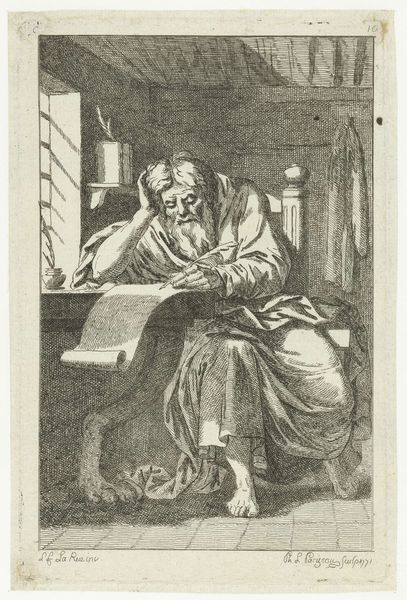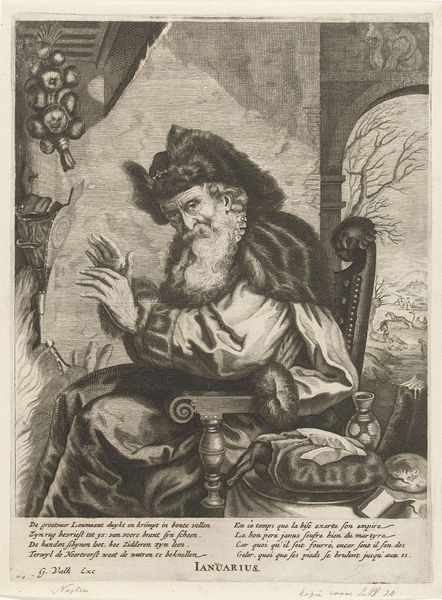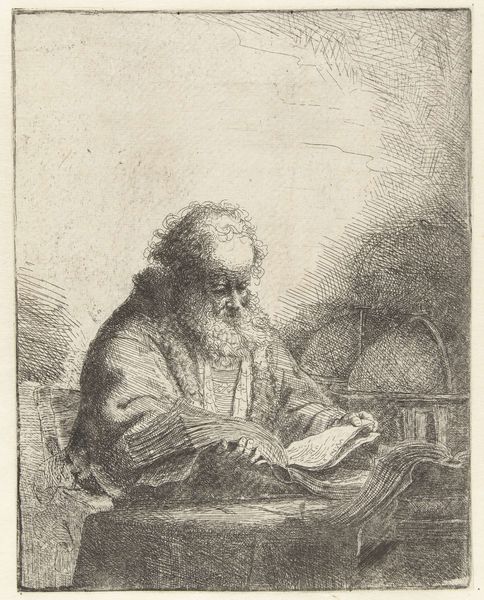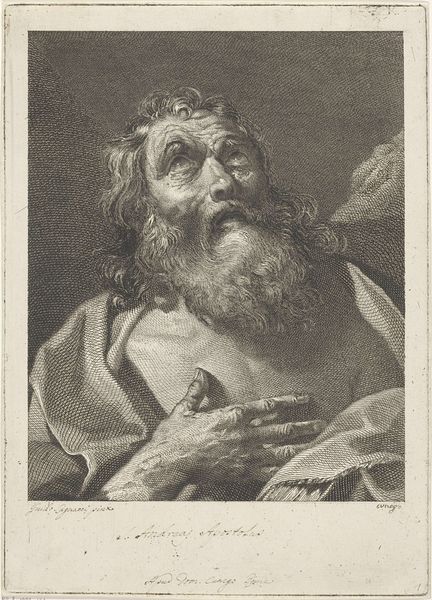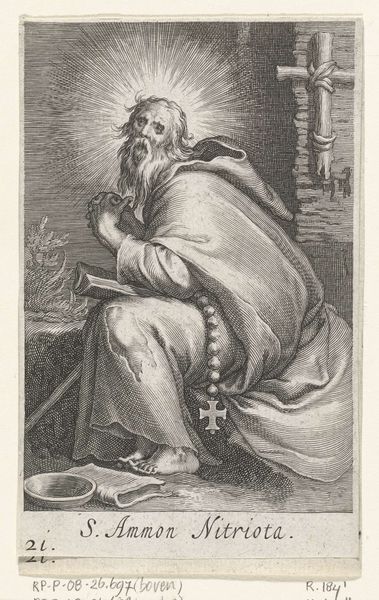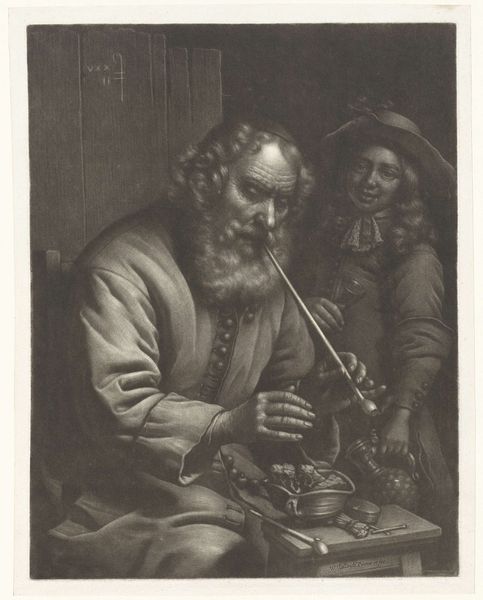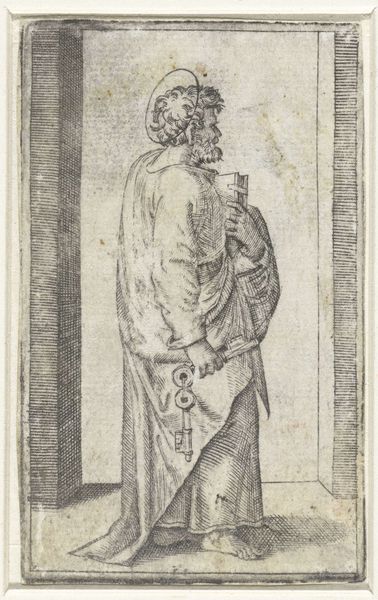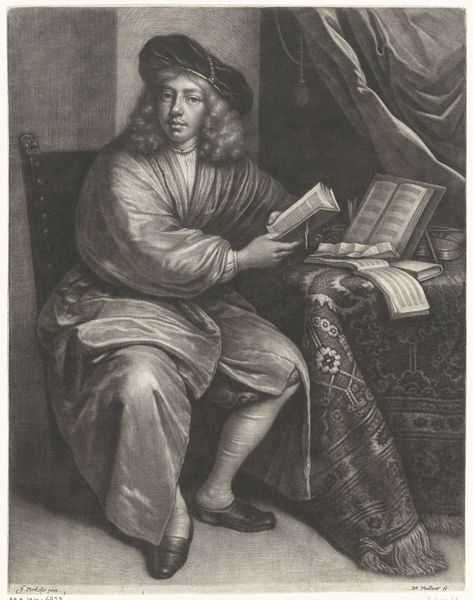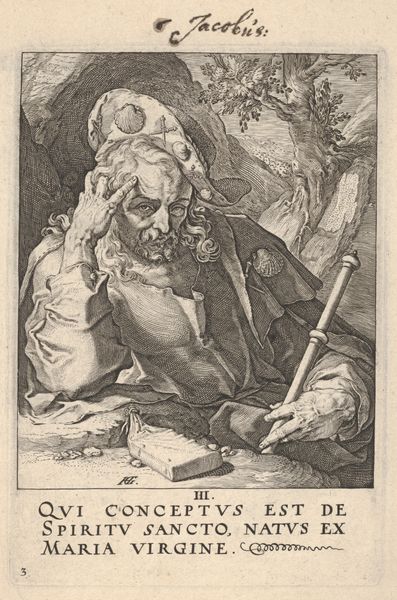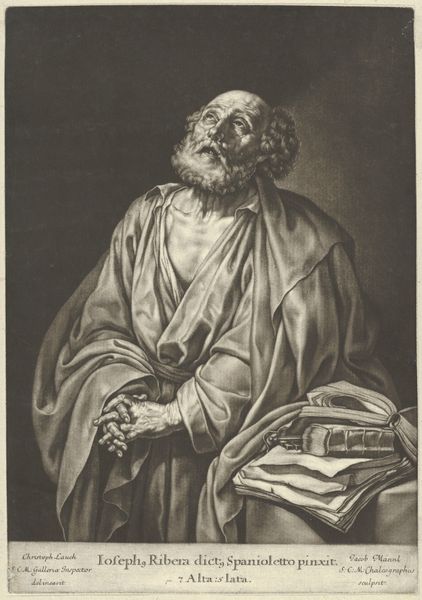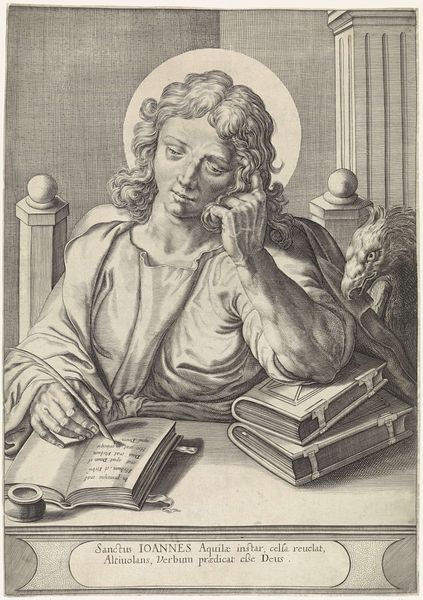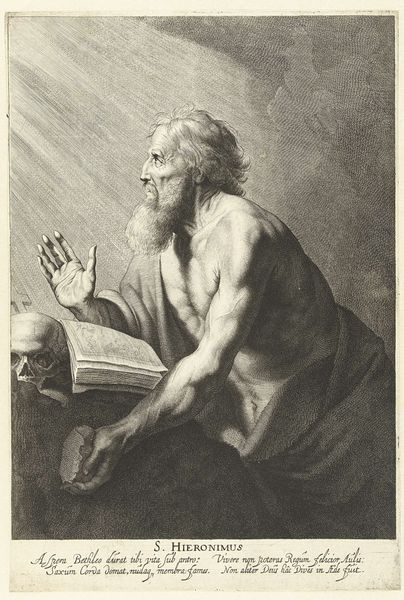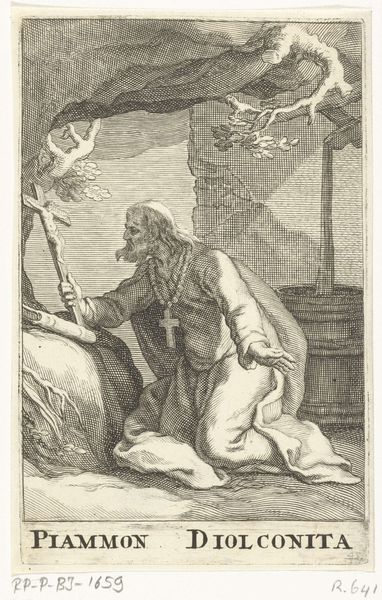
lithograph, print, etching, engraving
#
portrait
#
baroque
#
lithograph
# print
#
etching
#
engraving
Dimensions: height 413 mm, width 345 mm
Copyright: Rijks Museum: Open Domain
Curator: This is a portrait of Abraham van Lennep, created sometime between 1672 and 1677. It is held in the Rijksmuseum's collection and rendered as an engraving, etching, and lithograph print, by Wallerant Vaillant. Editor: Whoa, okay, immediately, it gives me a slightly melancholic vibe, don't you think? That heavy curtain, the way the light catches the satin robe, that stern looking bust behind him... it's Baroque drama at its finest. Curator: Absolutely, and within that Baroque framework, look at how Vaillant uses symbolic elements. The bust likely represents classical wisdom and virtue, pointing towards van Lennep's intellect and standing. Even the open book can indicate knowledge. Editor: Yes, exactly, like a display of his erudition and sophistication. But also… he looks slightly uncomfortable, doesn't he? As if he's saying "Yes, I know I have to pose with this ridiculously serious bust, but can we get it over with?" Maybe he just had a toothache, who knows. Curator: I believe what you see may actually be the effect of time and memory merging. There's a cultural echo within such images; portraiture became popular during the Baroque period among wealthy merchants, almost as a mode of social currency. It visually represents status and influence. Editor: Hmmm, the social currency part really makes me consider the intent behind creating and sharing these prints. Was it about showing off his personal success? Perhaps to spread his image amongst the republic of letters. It would be like a seventeenth-century publicity campaign, I guess? Curator: Precisely. And consider the materials here—engraving, etching, lithograph—they all enabled the creation and distribution of multiple copies. Dissemination was key, solidifying van Lennep's image across society. Editor: I appreciate how you decode all of that, giving a tangible sense to that era’s symbolic visual language, and also that he, Vaillant, managed to capture a bit of, dare I say, human frailty, beneath all that polished show. He feels accessible to our present era. Curator: I concur. It's that human element, rendered through careful symbolism, which lets his character speak across the ages. Editor: Definitely makes you think differently about those powdered wigs and frilly collars, huh? A real slice of humanity encased in cultural armor.
Comments
No comments
Be the first to comment and join the conversation on the ultimate creative platform.
